
Table of Contents
A kitchen garden is a small-scale garden that is designed to provide fresh produce for your kitchen table. Whether you live in the city or in the countryside, a kitchen garden can be a rewarding and satisfying way to grow your own fruits, vegetables, and herbs. Not only does it allow you to have access to fresh, pesticide-free produce, but it also helps to reduce your carbon footprint and support a more sustainable way of living.
Starting a kitchen garden can seem daunting, but with a bit of planning and preparation, it can be a fun and fulfilling project for all levels of gardeners. In this article, we’ll explore the benefits of having a kitchen garden and provide tips on how to get started with your very own one.
What is a Kitchen Garden?
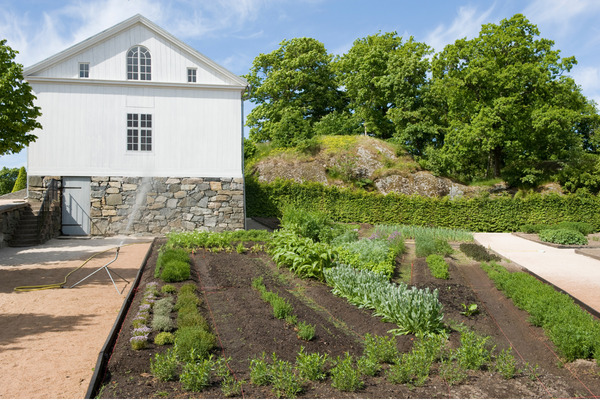
A kitchen garden, also known as a vegetable garden, is a small-scale garden designed to provide fresh produce for home consumption. This type of garden can be found anywhere, from large country estates to small urban backyards. Kitchen gardens can range from a small herb garden on a windowsill to an extensive garden that produces a wide variety of fruits, vegetables, and herbs.
Historically, kitchen gardens were an essential part of life in many cultures. They were particularly popular in medieval Europe, where they were often incorporated into the design of monastery gardens. These gardens were often used to grow medicinal herbs as well as food and were tended to by monks who were skilled in horticulture.
Today, kitchen gardens are popular among people who are interested in living a more sustainable and self-sufficient lifestyle. Growing your own fruits and vegetables allows you to have access to fresh, pesticide-free produce, and also helps to reduce your carbon footprint by reducing the amount of transportation required to get food to your table.
One unique aspect of kitchen gardens is that they can be tailored to the specific needs and tastes of the gardener. Depending on the location, climate, and preferences of the gardener, a kitchen garden can be used to grow a wide range of plants. Additionally, there are many different techniques and styles of gardening that can be used, including raised beds, container gardening, and square-foot gardening.
Pros and Cons of a Kitchen Garden
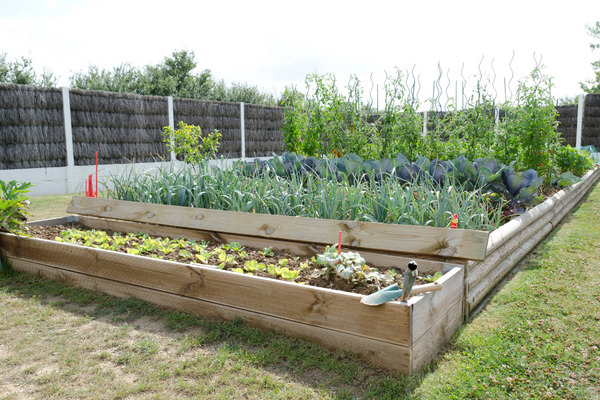
A kitchen garden, also known as a vegetable garden, has both pros and cons. Here are some of the most notable ones:
Pros:
- Fresh produce: A kitchen garden provides fresh, pesticide-free produce that can be harvested at its peak ripeness and flavor.
- Cost savings: Growing your own fruits and vegetables can be more cost-effective than buying them from a grocery store or farmers market.
- Health benefits: Eating a diet rich in fresh produce can provide a range of health benefits, including increased nutrient intake and disease prevention.
- Sustainable living: Growing your own food reduces your carbon footprint and supports a more sustainable way of living.
- Educational value: A kitchen garden can be a great way to teach children about where their food comes from and the process of growing it.
Cons:
- Time and effort: Maintaining a kitchen garden requires time and effort, including watering, weeding, and harvesting.
- Weather dependence: The success of a kitchen garden is largely dependent on weather conditions, which can be unpredictable and challenging to work with.
- Space limitations: Not everyone has enough outdoor space to start a kitchen garden, and container gardening may not be practical for those with limited indoor space.
- Pest and disease control: Kitchen gardens are vulnerable to pests and diseases, which can be difficult to control and can harm plant health and productivity.
- Seasonality: Depending on the climate, a kitchen garden may only be productive during certain seasons, requiring additional planning and preparation to extend the growing season.
Despite these challenges, a kitchen garden can be a rewarding and satisfying way to grow your own fresh produce and support a more sustainable way of living. With careful planning and preparation, it’s possible to overcome the cons and reap the many benefits of a kitchen garden.
A Kitchen Garden vs. a Vegetable Garden
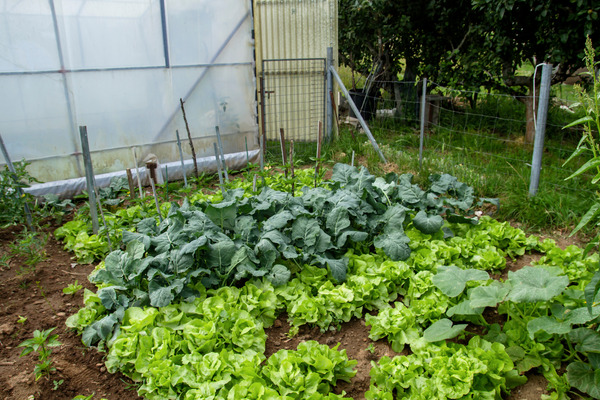
The terms “kitchen garden” and “vegetable garden” are often used interchangeably, but they can have slightly different meanings.
A kitchen garden typically refers to a small garden located close to the kitchen or home, where a variety of fruits, vegetables, and herbs are grown for use in cooking and meals. The focus is on growing a range of crops that can be used in everyday meals, and the garden is often designed for ease of access and practicality.
A vegetable garden, on the other hand, is a broader term that refers to any garden specifically designed for growing vegetables. This can include larger plots of land, community gardens, or commercial farms. The focus of a vegetable garden is solely on growing vegetables, and the garden may be designed for maximum yield and efficiency rather than practicality or aesthetics.
Overall, the main difference between a kitchen garden and a vegetable garden is the scale and purpose. A kitchen garden is typically smaller and designed for practicality and ease of use, while a vegetable garden can be larger and designed for maximum yield and efficiency. Both types of gardens can provide fresh, healthy produce and a rewarding gardening experience.
What to Grow in a Kitchen Garden
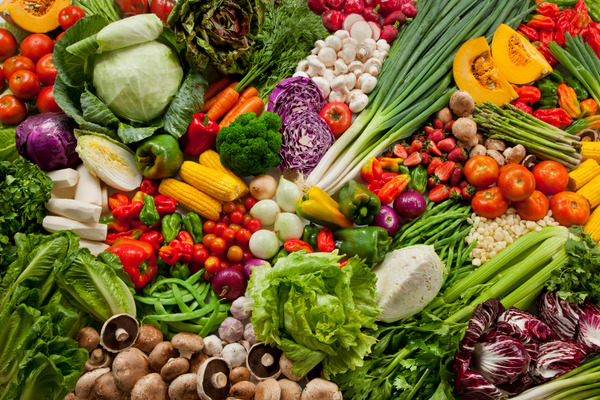
A kitchen garden can be a great way to grow fresh, healthy produce right outside your door. Here are some popular crops to consider growing in a kitchen garden:
- Herbs: Herbs are a staple of any kitchen garden, as they can be used to add flavor and aroma to a variety of dishes. Some easy-to-grow herbs include basil, thyme, parsley, and cilantro.
- Salad greens: Fresh, crisp salad greens are another great option for a kitchen garden. Lettuces, arugula, spinach, and other greens are easy to grow and can be harvested multiple times throughout the growing season.
- Tomatoes: Tomatoes are a popular choice for a kitchen garden, as they can be used in a variety of dishes, from salads to sauces. They can be grown in containers or in the ground, and there are many varieties to choose from.
- Peppers: Hot or sweet, peppers are a versatile crop to grow in a kitchen garden. They can be used fresh or roasted, and they come in a variety of colors and flavors.
- Beans and peas: Beans and peas are easy to grow and provide a good source of protein. They can be grown on trellises or poles to save space.
- Root vegetables: Carrots, beets, and radishes are just a few examples of root vegetables that can be grown in a kitchen garden. They can be grown in containers or in the ground, and they are a good source of vitamins and minerals.
Ultimately, the best crops to grow in a kitchen garden will depend on your personal preferences, growing conditions, and available space. Consider what you enjoy eating and what will grow well in your climate, and don’t be afraid to experiment with different crops and growing techniques.
Types of Kitchen Gardens
There are several types of kitchen gardens, each with their unique features and benefits. Here are the most common types of kitchen gardens:
· Container Garden
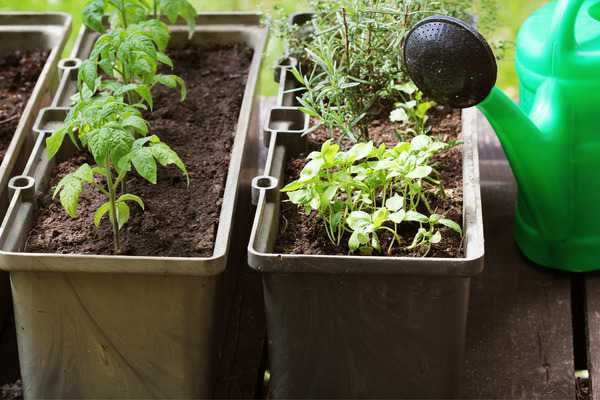
A container garden is a type of kitchen garden that uses containers, such as pots or hanging baskets, to grow plants. Container gardens are ideal for small spaces, as they can be placed on a balcony, patio, or even a windowsill. They can also be moved around to take advantage of the best sunlight.
· Raised Bed Garden
A raised bed garden is a type of kitchen garden that consists of a raised bed or box filled with soil. This type of garden is ideal for those with poor soil or limited space. Raised bed gardens can be made from a variety of materials, including wood, concrete blocks, or even metal.
· Square Foot Garden

A square-foot garden is a type of raised bed garden that is divided into square sections. Each section is planted with a different crop, and the garden is designed to maximize space and yield. Square foot gardens can be made from wood, concrete blocks, or other materials, and they are an excellent choice for those with limited space.
· Herb Garden
An herb garden is a type of kitchen garden that is dedicated to growing herbs. Herbs are an essential ingredient in many dishes, and an herb garden provides easy access to a variety of fresh herbs. Herb gardens can be grown in containers, raised beds, or in the ground.
· Vegetable Garden

A vegetable garden is a type of kitchen garden that is dedicated to growing vegetables. Vegetable gardens can be grown in containers, raised beds, or in the ground. They are an excellent way to provide fresh, healthy produce for your family.
Ultimately, the type of kitchen garden that is best for you will depend on your available space, growing conditions, and personal preferences. All of these types of kitchen gardens can be customized to suit your needs, and each offers a unique set of benefits.
How to Start Your Own Kitchen Garden
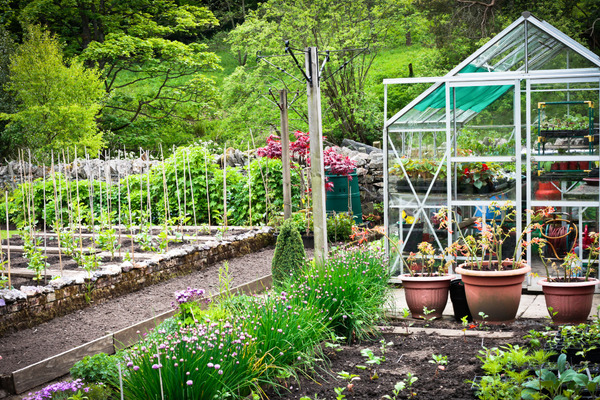
Starting a kitchen garden can be a rewarding and fulfilling experience. Here are some steps to get you started:
- Choose a location: Select a sunny spot with good soil drainage for your kitchen garden. You can choose to use raised beds or containers if the soil is not ideal.
- Decide on the size: Determine the size of your garden based on the space you have available, the amount of time you have to care for it, and how much produce you want to grow.
- Plan your garden: Sketch out your garden plan, keeping in mind the types of plants you want to grow and their spacing requirements. Consider companion planting, which involves planting different plants together that benefit each other.
- Prepare the soil: Prepare the soil by removing weeds and rocks and adding compost or other organic matter. This will provide the plants with the necessary nutrients and help retain moisture.
- Choose your plants: Decide what you want to grow based on your family’s preferences and what will thrive in your climate. Consider starting with easy-to-grow herbs, such as basil, thyme, and parsley, or vegetables, such as tomatoes, lettuce, and peppers.
- Plant and maintain your garden: Plant your seeds or seedlings according to the spacing requirements and care for them properly. This includes watering, fertilizing, pruning, and harvesting.
- Enjoy the fruits of your labor: As your plants mature, harvest and enjoy the fresh produce from your garden. Experiment with different recipes and share your bounty with friends and family.
Starting a kitchen garden is a great way to provide your family with fresh, healthy produce, while also connecting with nature and enjoying the satisfaction of growing your own food. With a little planning and care, your kitchen garden can thrive and provide you with a bountiful harvest.
Frequently Asked Questions about Kitchen Gardens
The goal of a kitchen garden is to provide fresh and flavorful produce for home cooking, and promote sustainability and self-sufficiency.
Kitchen gardens can include a wide variety of vegetables, such as tomatoes, lettuce, herbs, carrots, cucumbers, peppers, beans, and radishes.
A kitchen garden is typically a smaller garden close to the house, intended for easy access to fresh herbs and produce, while a vegetable garden can be larger and focused on growing produce in greater quantities.
Efficient use of space
Sustainable and organic practices
Companion planting
Crop rotation
Consistent maintenance
Use of natural fertilizers and pest control
Maximizing yields
Proper spacing and pruning
Proper soil preparation
Regular watering and weeding
A kitchen garden, also known as a potager, is a small, typically organic garden close to the home, intended for growing fruits, vegetables, and herbs for cooking.
The Take-Away
Kitchen gardens are an excellent way to add a touch of freshness and health to our daily lives. Whether you are a seasoned gardener or a complete beginner, starting a kitchen garden can be a fun and rewarding experience.
By growing your own herbs, vegetables, and fruits, you can take pride in the food you put on your table, and enjoy the many benefits that come with gardening, such as stress relief and improved mental health.
With the information provided in this article, you can now start planning and creating your own kitchen garden, and be well on your way to enjoying fresh, healthy, and delicious produce all year round.






